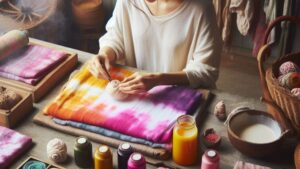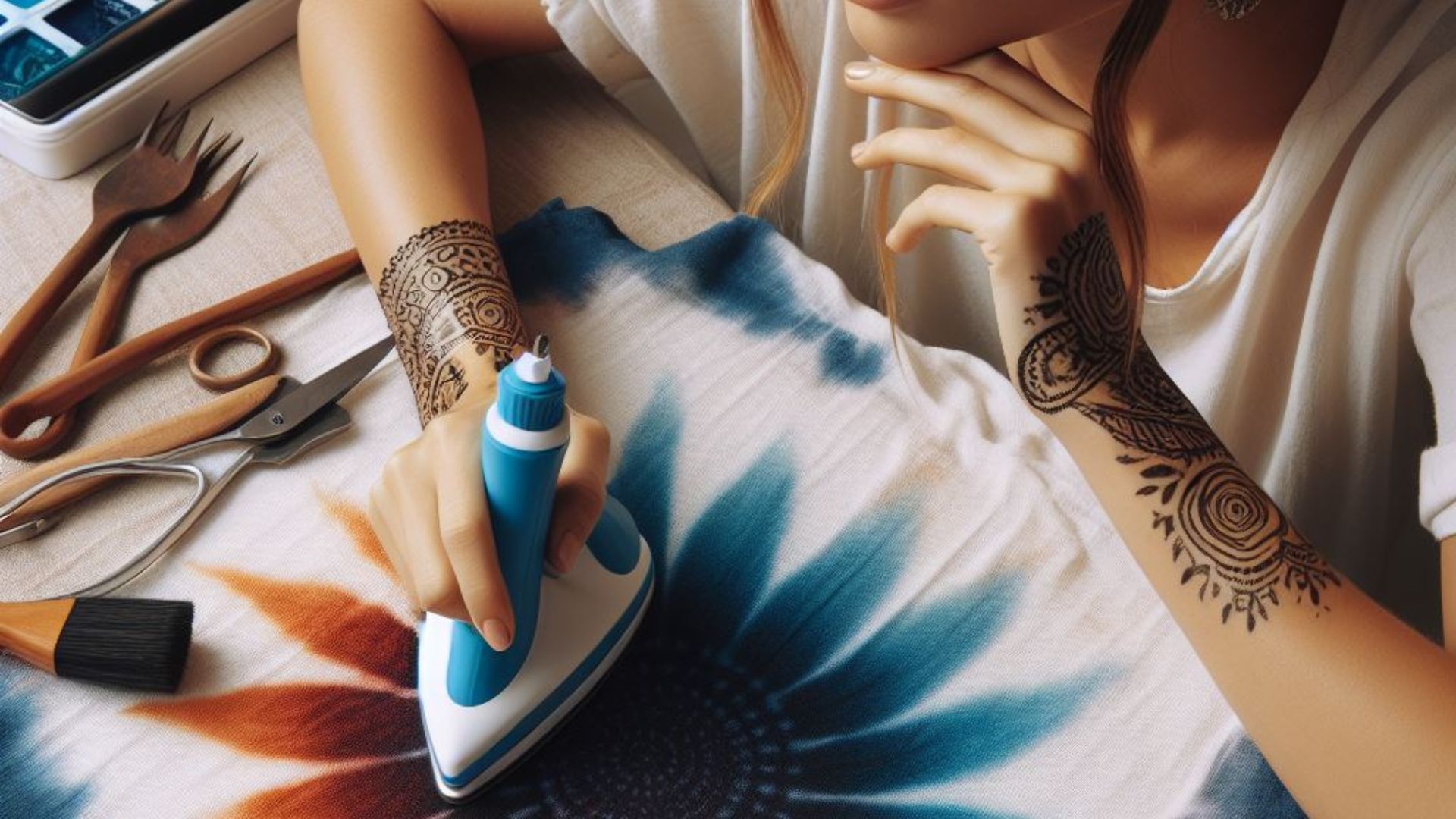The Tie-Dye Setting Process
Tie-dye involves binding, folding, or twisting fabric before applying dye. Once applied, the fabric needs time for the dye to set and bond with the fibers. This usually takes several hours or overnight, allowing the colors to saturate and create those mesmerizing designs.
Can a Hairdryer Help?
Using a hairdryer on your tie-dye creation might seem tempting, but it’s not the best approach. While the heat can expedite the drying, it might not set the dye effectively. High temperatures can actually make the dye bleed or set unevenly, altering your intended patterns.
What About a Fan?
A fan, on the other hand, aids in the drying process without adding heat. It promotes air circulation, helping the fabric dry faster naturally. While it won’t drastically speed up the setting time, it can accelerate the drying process after the initial setting time.

Tips for Efficient Tie-Dye Setting
- Patience is Key: Rushing the setting process might compromise your design. Give the dye ample time to set naturally for vibrant and long-lasting colors.
- Follow Instructions: Different dyes have varying setting times. Always follow the instructions on the dye packaging for optimal results.
- Prevent Bleeding: Rinse your tie-dye creation thoroughly before hanging it to dry. This helps remove excess dye and prevents bleeding into unwanted areas.
So,…
While a hairdryer isn’t recommended due to its potential to affect the dye’s setting, a fan can aid in the drying process post-setting time. Remember, patience yields the best results in tie-dyeing!
For more insights into tie-dye techniques and best practices, explore these resources:
Exploring Tie-Dye: Tips, Tricks, and FAQs
Tie-dyeing isn’t just a craft; it’s an experience that splashes life with vibrant colors! Let’s delve deeper into this art form and address some common questions to ensure your tie-dye journey is as colorful and exciting as possible.
Understanding Tie-Dye Setting
1. Can I use a hairdryer or fan to accelerate the tie-dye-setting process?
The setting process in tie-dyeing involves allowing the dye to bond with the fabric fibers. While a fan can aid in drying without compromising the dye, a hairdryer’s heat might affect the setting, leading to uneven colors or bleeding.
2. How long does the tie-dye-setting process take?
Typically, the dye needs several hours or overnight to set properly. However, different dyes might have varying setting times, so always refer to the instructions on the dye packaging for accurate timing.
Enhancing Your Tie-Dye Artistry
3. What fabric is best for tie-dye?
Natural fabrics like cotton, hemp, or rayon tend to absorb and hold dye better than synthetics. Their absorbent nature allows for vibrant and long-lasting colors.
4. How can I create unique tie-dye patterns?
Experiment with various folding, twisting, and binding techniques! Spiral, crumple, or accordion folds can yield different patterns. Mixing dye colors and using different application methods also adds variety.
5. Should I pre-wash fabric before tie-dyeing?
Yes, pre-washing removes any sizing or impurities that might hinder dye absorption. Ensure the fabric is damp before applying dye for better color penetration.
Embracing the Tie-Dye Adventure
Tie-dyeing isn’t just about colors; it’s about expressing your creativity and embracing the unexpected. Remember, each creation is unique!
For more tie-dye inspirations and detailed guides, check out these resources:
Comparison tabular
Here’s a tabular comparison of using a hairdryer versus a fan for accelerating the tie-dye setting process:
| Aspect | Hairdryer | Fan |
|---|---|---|
| Heat | Emits heat which might affect dye setting and cause bleeding. | Does not emit heat, only aids in drying by promoting airflow. |
| Impact on Dye Setting | High heat can lead to uneven setting or bleeding of colors. | Facilitates natural drying without compromising dye integrity. |
| Speed of Process | May dry fabric faster but could compromise the dye’s setting. | Helps in the drying process post-setting time without heat. |
| Recommended Use | Not recommended due to potential dye alteration. | Suitable for aiding in the natural drying of tie-dye creations. |
| Resulting Outcome | Potential risk of altered or uneven colors. | Helps in efficient, even drying post the initial setting time. |
This comparison highlights the potential effects of using a hairdryer or a fan in the tie-dye process, emphasizing the importance of allowing the dye to set naturally for optimal and vibrant results.
Wrapping up
In the colorful world of tie-dye, patience truly brings out the most vibrant results! While the idea of speeding up the setting process with a hairdryer might seem enticing, it’s best to let nature take its course.
Remember, a fan can lend a helping hand in the drying process post-setting time without altering your masterpiece. But ultimately, embracing the waiting game ensures those vivid colors set beautifully, creating a mesmerizing tapestry of hues.
So, let your creativity flow, experiment with folding and twisting techniques, and allow each creation to be a unique reflection of your artistic spirit. Happy tie-dyeing! 🌈✨

For over a decade, I’ve been Mike, an artist, crafter, and designer deeply immersed in the Croc world. I thrive on crafting unique, size-inclusive patterns, fostering creativity, and sharing them on ktforum.com. My designs aim to ignite your creative spark and delight you, ensuring clarity and ease of use through rigorous testing. Join me in expressing your creative flair and showcasing your craft with joy.
Related Posts
- To Set or Not to Set: Understanding the Tie-Dye Setting Process
Tie-dyeing is a fantastic way to infuse vibrant colors and creative designs into fabrics. Yet,…
- Is There a Risk in Delaying Tie-Dye Setting After Application
Tie-dyeing is a vibrant and creative way to breathe life into fabrics, but timing is…
- Understanding the Impact of Sunlight on Setting Tie-Dye
Tie-dyeing is a vibrant and creative way to add a burst of color to fabrics.…
- Tie-Dye Setting: Special Considerations for High-Altitude Areas
Tie-dyeing is a vibrant and creative way to add color and personality to fabrics. However,…

